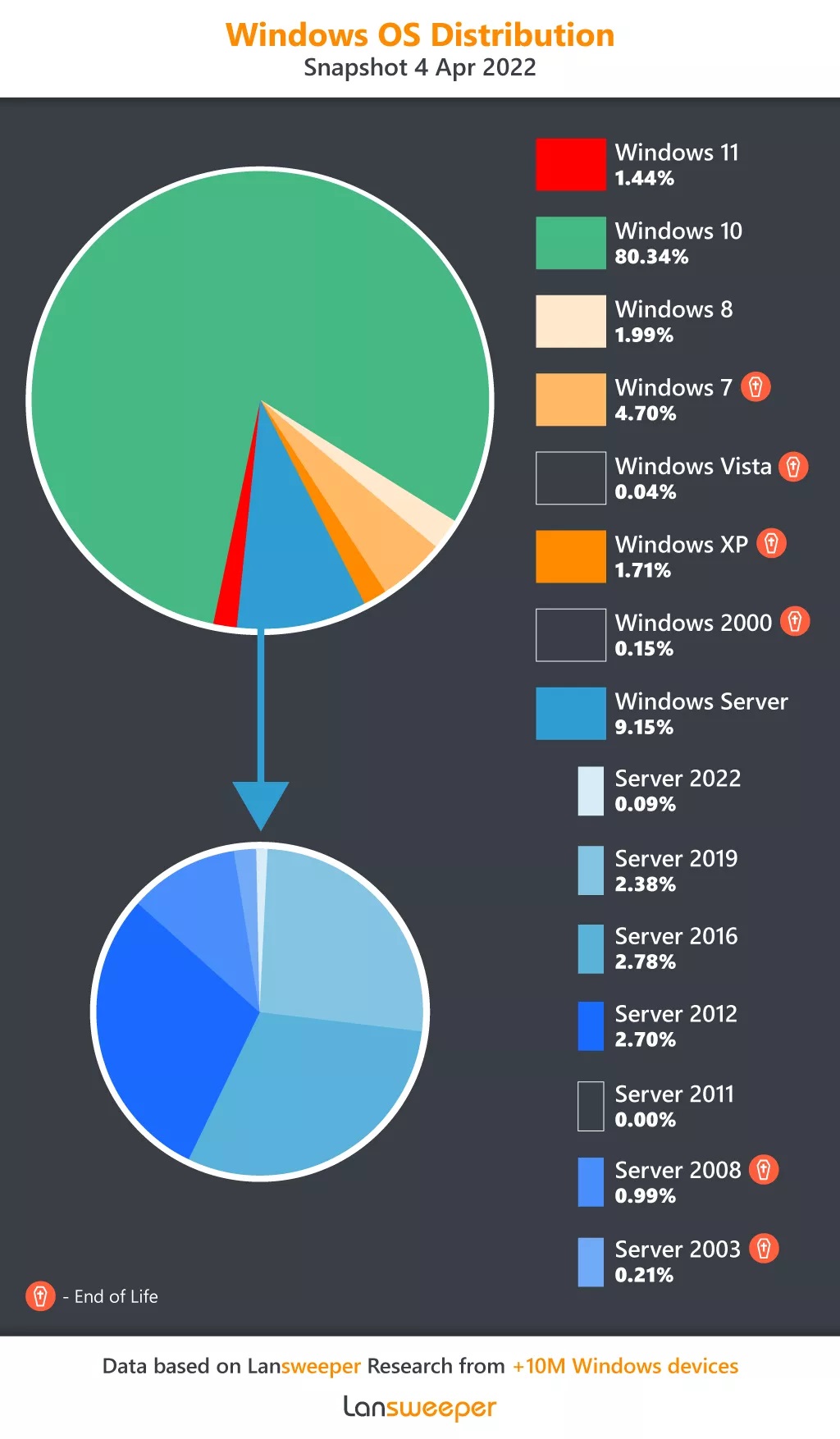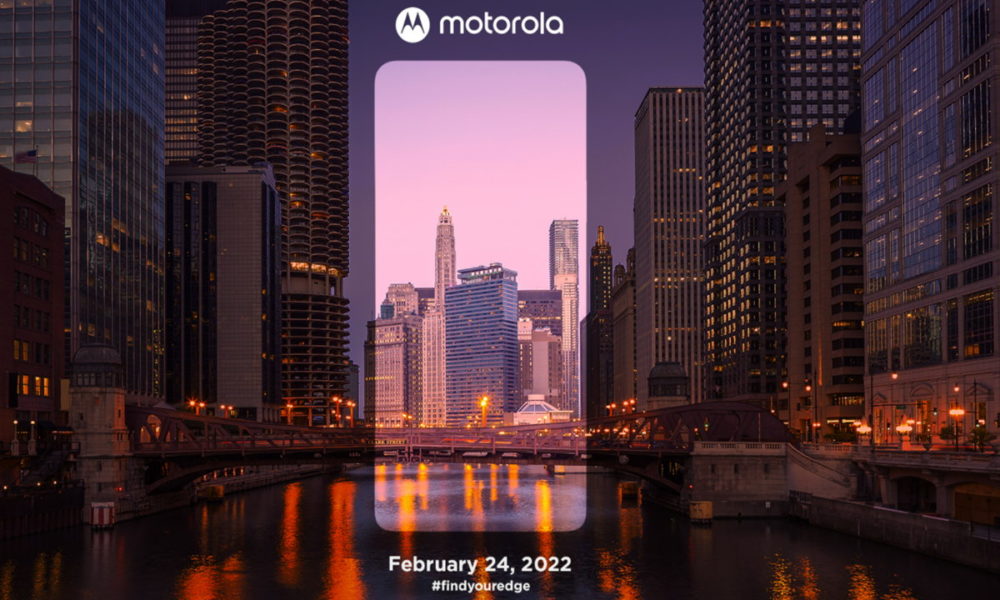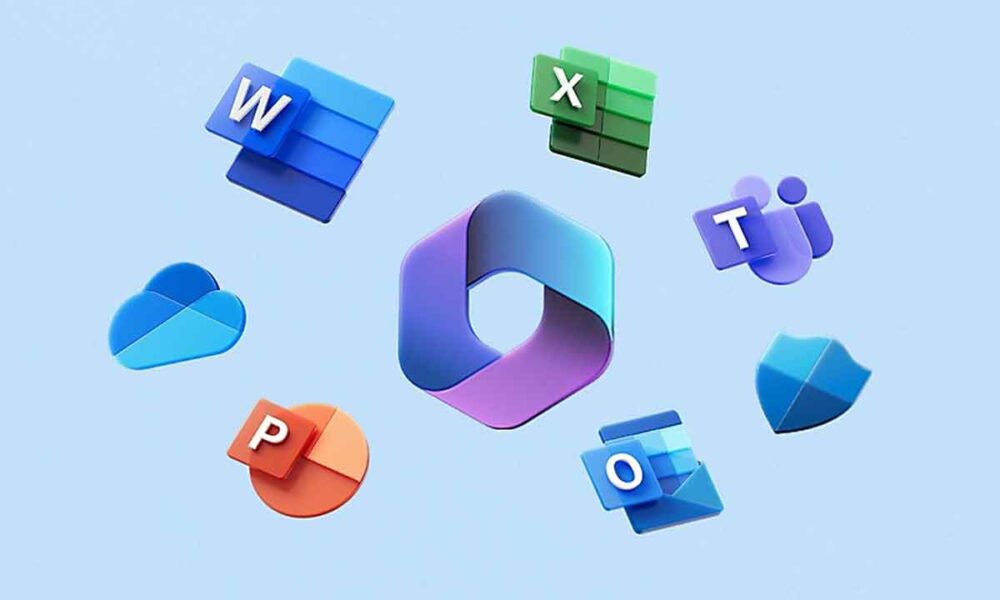
It is not a secret, the adoption rate of Windows 11 is being slower than that of Windows 10, but what we could not imagine is that said operating system is still it has not surpassed Windows XP in the professional sector. This is confirmed by a recent study carried out on more than 10 million professional devices, and that we can see perfectly illustrated in the attached graph.
According to said study, which frankly is one of the most reliable that we can find right now because, as we anticipated, it has been carried out directly on a total of 10 million computers, Windows 10 leads with a share of 80.34%, followed by Windows Server in different versions, and with Windows 7 in third position. The fourth place is for Windows 8, with a share of 1.99%, and closes the top five Windows XP with 1.71%.
To give you an idea of the importance of this study, I remind you that the data from AdDuplex, one of the most consulted firms to assess the adoption rate of different operating systems, including Windows 11, uses information from only 60,000 computers. The difference is enormous, and that is why this study deserves so much attention, even if it is limited to the professional sector.
Windows 11 in the general consumer market: Steam confirms the trend
Steam’s monthly hardware and software survey is also one of the most reliable sources we can look at, and a slowdown in the adoption rate of Windows 11 was confirmed in March data. a growth of 2.03% in February 2022while in March of this year said growth was only 1.25%. It will be interesting to see the data for April, which will be available from the month of May.
If we talk about the total, in March 2022 Windows 11 obtained a share of 16.84% on Steam, a figure that is still far from the 74.69% registered by Windows 10. Personally, I think that this operating system could end up becoming the new Windows XPsomething that we also expected to happen with Windows 7, but in the end it was not fulfilled thanks to the low requirements of Windows 10, and the possibility of upgrading to said operating system for free.
In the case of Windows 10 we have a different situation. It is true that we can also upgrade to Windows 11 for free, but the requirements of the latter are very highand they have become a glass ceiling for many users who have powerful and perfectly capable computers, which however do not meet the minimum requirements of Windows 11. In this sense, the most important, and limiting, are the chip TPM 2.0 and limited support for Zen+ or Coffee Lake processors.
On the other hand, we must also take into account that Windows 11 does not bring really important news compared to Windows 10, and that the interface change that Microsoft has introduced has not pleased everyone. To the above we have to add the issue of performance, and it is that Windows 11 does not work well on a computer configured with 4 GB of RAM, but Windows 10 does offer a good experience on a computer with that amount of RAM.
It is clear that, in the end, Windows 11 has been affected by several key factorsand that these are going to have a negative impact on their adoption rate for years to come.





